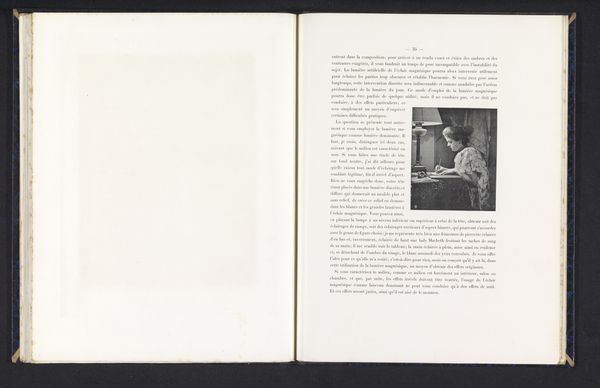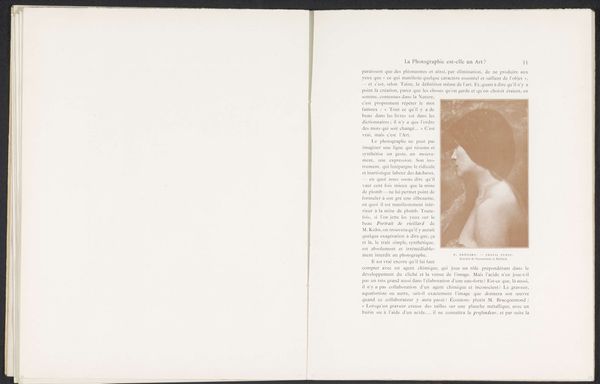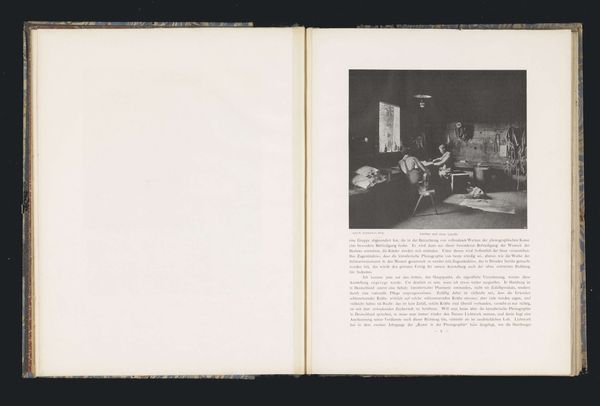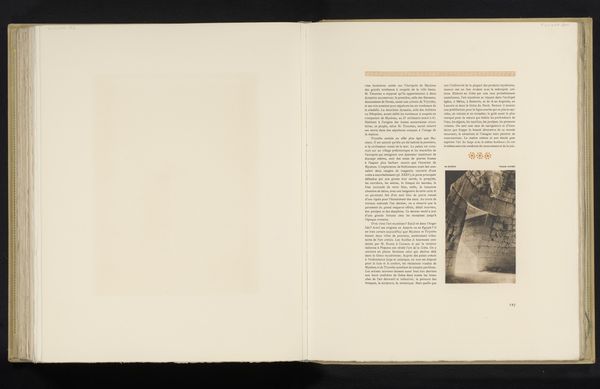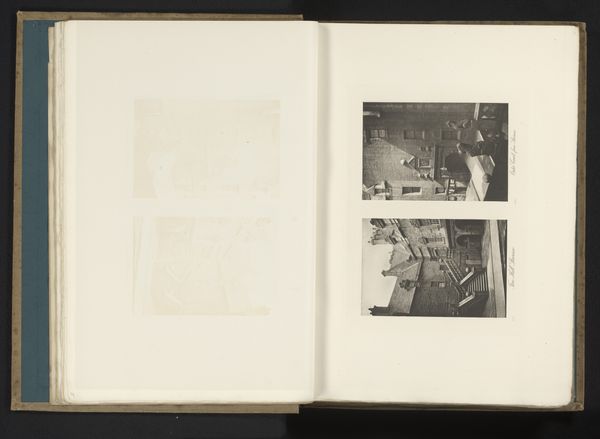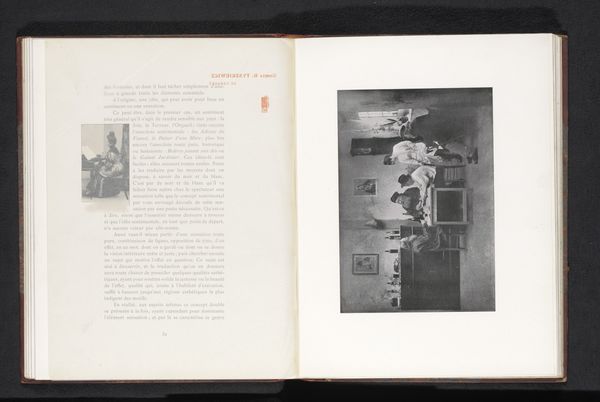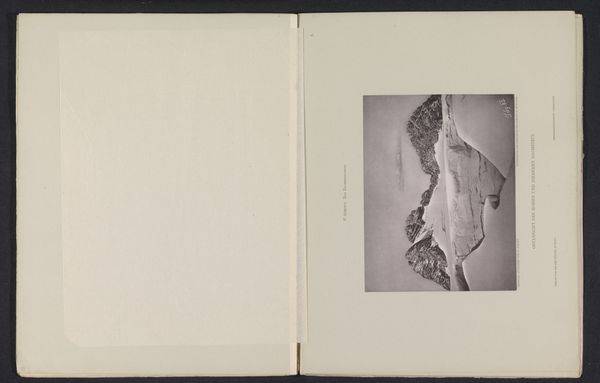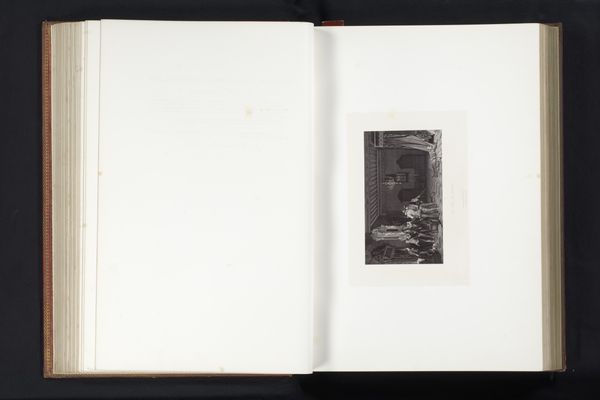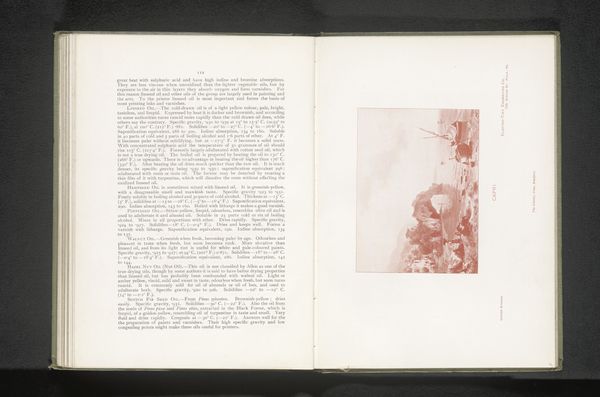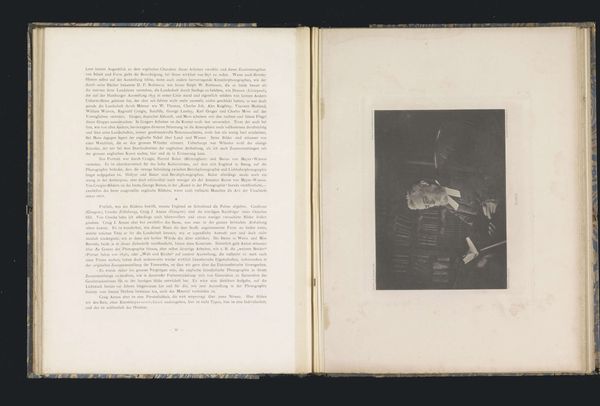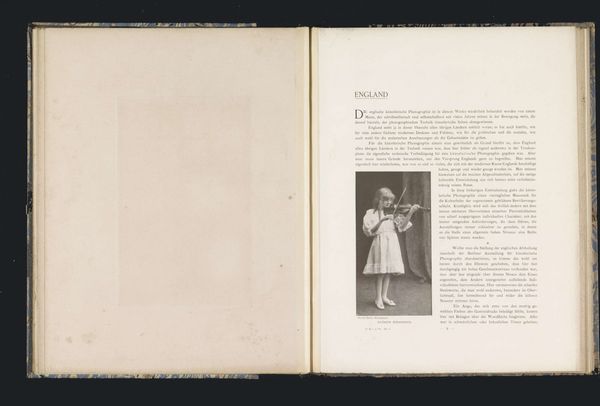
Dimensions: height 117 mm, width 153 mm
Copyright: Rijks Museum: Open Domain
Editor: This is “Naaiende vrouw in een interieur,” or “Sewing woman in an interior,” by Constant Puyo, dated before 1896. It’s a photograph. It looks like a book, and there's something calming about the woman's posture and focus. What compositional elements stand out to you? Curator: Immediately, the stark contrast between the crisp photograph and the aging paper it's printed on grabs my attention. Note the photographer’s placement of the figure relative to the floral arrangement: the subject matter exists in concert and competition with its surroundings, demanding consideration for how they both occupy the picture plane. How does the juxtaposition of hard and soft lines direct your reading of the image? Editor: Well, the sharp lines of the furniture create a grid-like structure, contrasting with the soft, diffused focus on the woman and flowers. The photographer manipulates depth of field, calling attention to certain forms and textures, so the composition is dynamic. But what is Puyo trying to communicate through such varied treatment of these visual components? Curator: Communication, perhaps not so literal, but formal. By varying the sharpness, Puyo prioritizes how we *see* over what we *see*. We must engage with it formally before meaning can truly be drawn. Observe the textures of the fabrics. The arrangement isn't about the representation, but about light, shape, and form within the chosen medium. Consider how this challenges photography’s traditional claim to objective representation. Editor: So it’s not really about her sewing, but how our eye moves through the photograph. That’s fascinating. Thanks for showing me how to really *see* this work. Curator: It's about understanding that visual form precedes narrative content. That is the enduring lesson here.
Comments
No comments
Be the first to comment and join the conversation on the ultimate creative platform.
